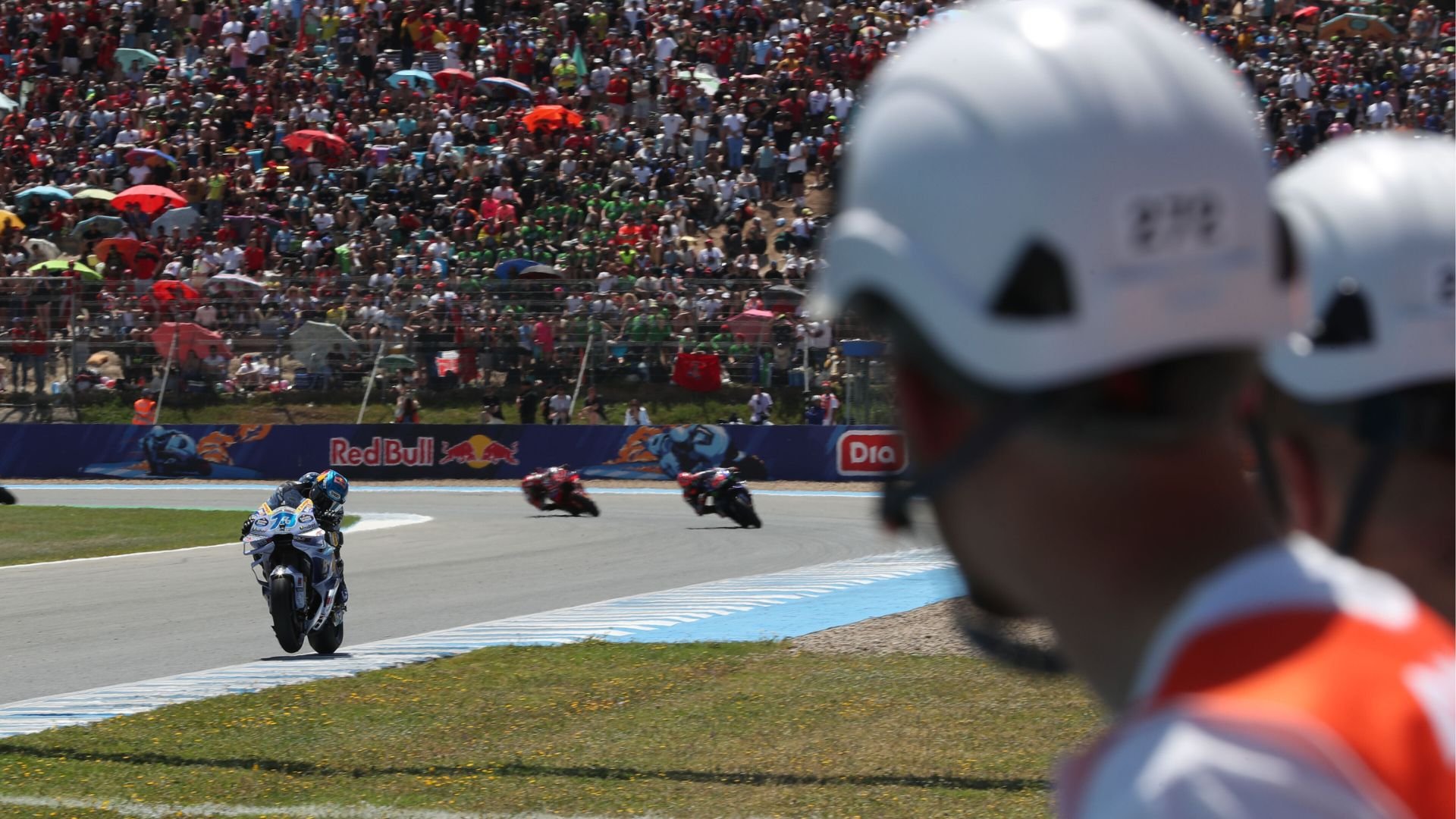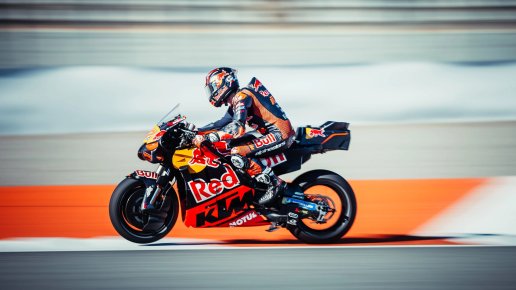
Photo: Gold & Goose / Red Bull Content Pool
MotoGP Explained: How the safety features protect riders

MotoGP is known for its speed and excitement, but with great speed comes great risk. That’s why safety is crucial in the sport. In this guide, we’ll explore how MotoGP uses advanced helmets, racing suits, cutting-edge bikes, and track features to keep riders safe at incredibly high speeds.
F1 & MotoGP news to your inbox every day.
In the world of MotoGP the safety of riders and track marshals is very important. As riders ride extremely fast, sometimes more than 360 km/h and this is what makes the sport exciting but also dangerous. So that is why safety is a top priority in every race. So let’s take a look at how the safety of riders works.
In MotoGP, riders, teams and race organizers all work together to make racing as safe as possible. So when a crash is happening, it is because riders push their bikes to the limit.
So what riders wear to be safe?
Helmets
The MotoGP helmets are some of the safest in the world. As viewers, every helmet must pass strict safety tests and get special approval from the FIM (Fédération Internationale de Motocyclisme). Also the helmet is made of a hard outer shell and soft inner padding to protect rider’s head.
The helmets have also Anti-fog Technology (so riders can see clearly), strong visor to block debris, rain and sunlight, good air flow to keep the rider cool.
Example of the importance of helmet, is when a rider crashes and hits their head on the track, the helmet helps to absorb the shock so they don’t get a brain injury.
Absolute heartbreak 💔
— MotoGP™🏁 (@MotoGP) April 14, 2025
Sending our best wishes to our Champ @88jorgemartin on his recovery after this one 🦾
📋 The final medical check showed six fractures on the right posterior arches and he will remain under observation at the hospital until the pneumothorax resolves. pic.twitter.com/lq9ATFIJgL
Racing suits
The MotoGP racing suits are made from strong leather and high-tech materials. So they help protect the skin if riders fall and slide. They also most importantly have built-in airbags and back protection. Are made to fit each rider perfectly. And they include protection for knees, back, elbows, shoulders and hips.
So when a rider crashes and slides on the ground, the suit stops the skin from getting cut or burned by the track surface.
Gloves and boots
The gloves protect the hands, especially the palms and fingers. They are strong but also let the rider feel the throttle and brakes.
Boots protect the ankles, heels and toes. And some boots have sliders on the outside, which help when a rider's feet touch the track.
Example is that if a rider puts their foot on the ground in a turn, the boot’s outer slider stops it from getting hurt.
Another podium in the bag for @PeccoBagnaia 🥉#SpanishGP 🇪🇸 pic.twitter.com/YlDn3Ok3yD
— MotoGP™🏁 (@MotoGP) April 27, 2025
How are the bikes made safer?
The MotoGP bikes are built with performance and safety in mind. So that is why each bike has many high-tech sensors that check things like: engine temperature and pressure, throttle position, brake pressure, lean angle and wheel speed. And these sensors give teams important data to keep their bikes running safely. So engineers then adjust the bike setup, like suspension or traction control, based on the data and feedback from the riders.
Example of this is that if the sensors show the back wheel is slipping too much, the team can change the traction control so the bike is easier to handle.
But the bike features also traction control (stops wheels from spinning too fast), anti-wheelie systems (help keep the front wheel on the ground), carbon brakes (improves stopping power), virtual pit boards (show messages from the team or race official in the rider dashboard).
Safety at the track
The track safety is a very important segment. Because before and during every race, the safety team checks the track to make sure it is clean and ready. The things the track safety features are following:
Run-off areas
There are large areas of asphalt or gravel outside the track. So if riders crash, they slide across these areas to slow down safely before hitting anything.
Example is when the rider falls off the bikes, the gravel slows them down before they reach the wall.
Unbelievable scenes 🤯 🤯 @marcmarquez93 tried but could not save this one and crashed 💥#SpanishGP 🇪🇸 pic.twitter.com/eP4fXZADZH
— MotoGP™🏁 (@MotoGP) April 27, 2025
Air fences
These are soft barriers placed in front of walls or objects. They absorb the force of a crash to reduce injury. And in Jerez, we had many yellow flags, due to the air fences needing to be repaired.
Marshals
Marshals are safety workers who stand at the side of the track. They wave flags to signal danger, they help riders who had crashed and keep the race safe.
Another thing that needs to be mentioned are the safety meetings and checks. As each MotoGP weekend, a group called the Event Management Committee checks safety at the track. On Friday, the riders also meet in the Safety Commission to talk about any concerns or improvements needed for safety.







